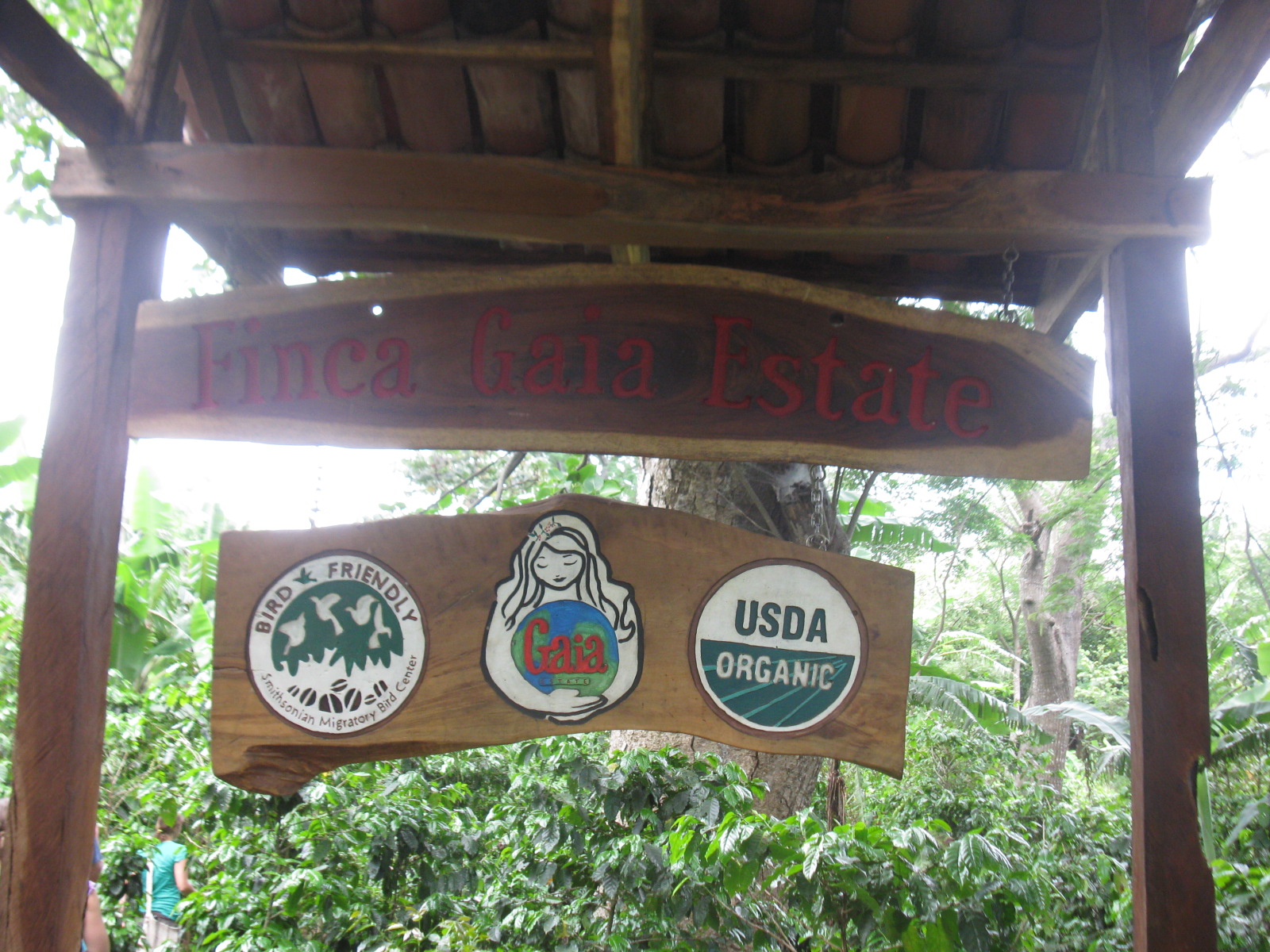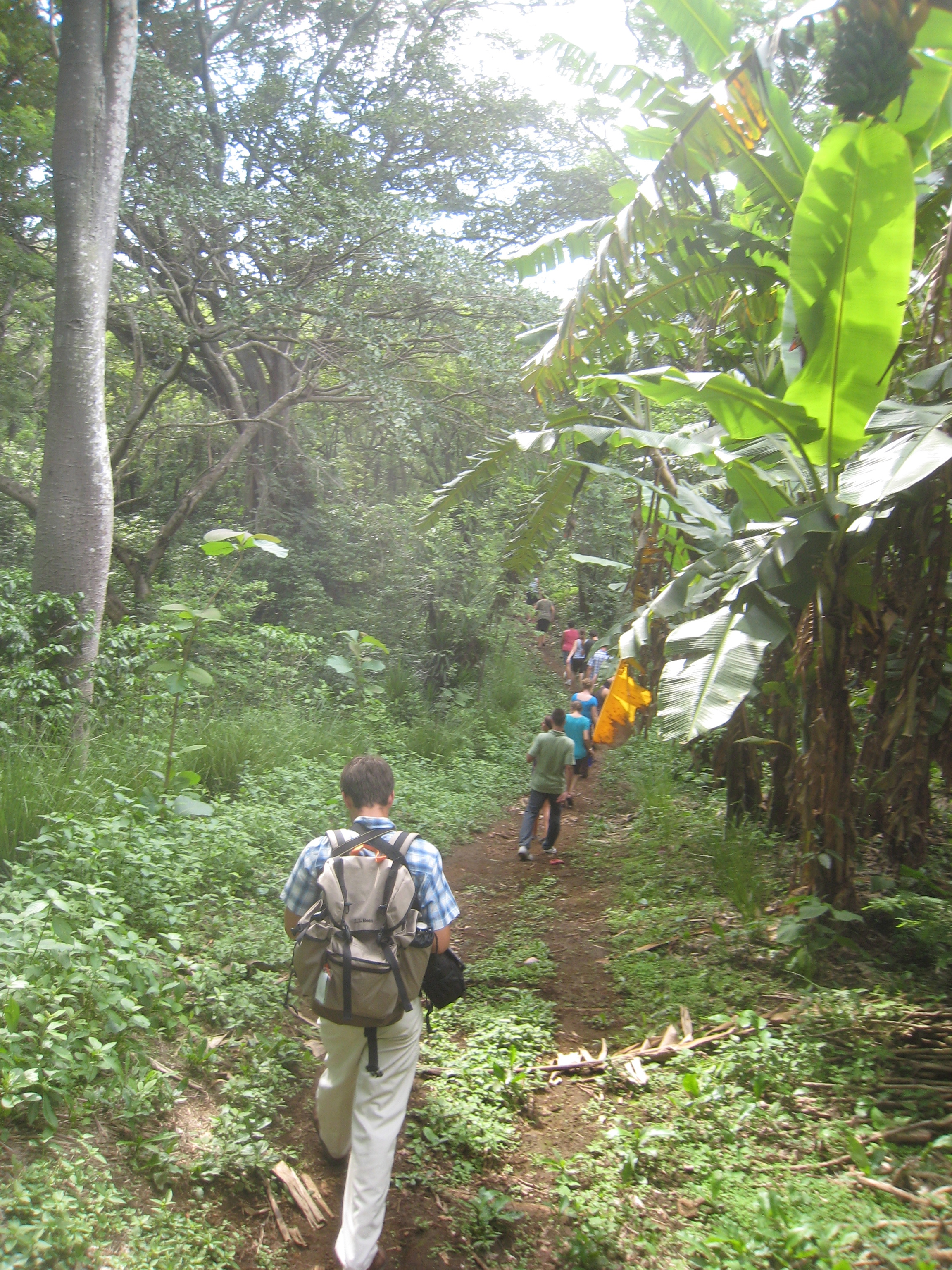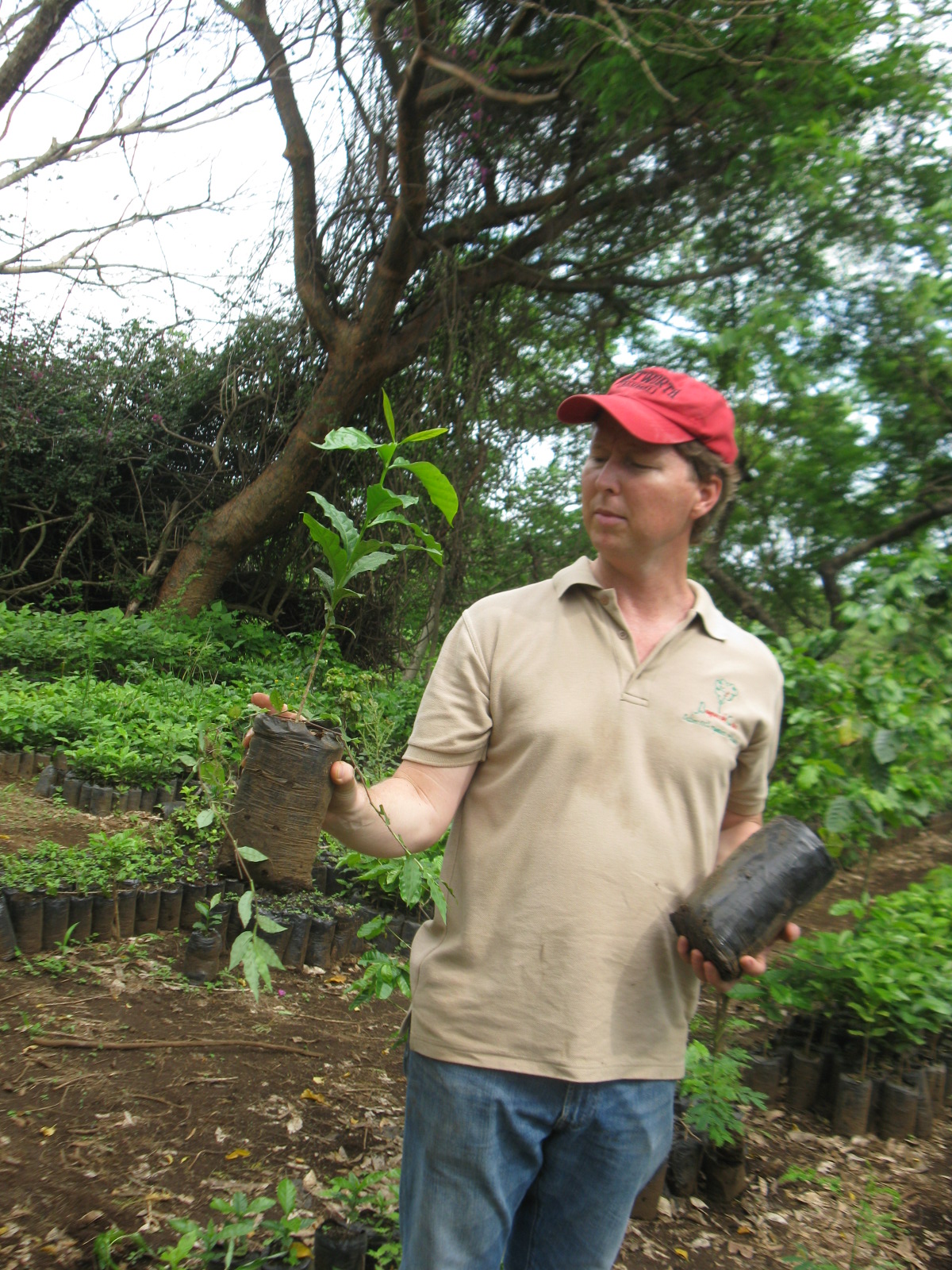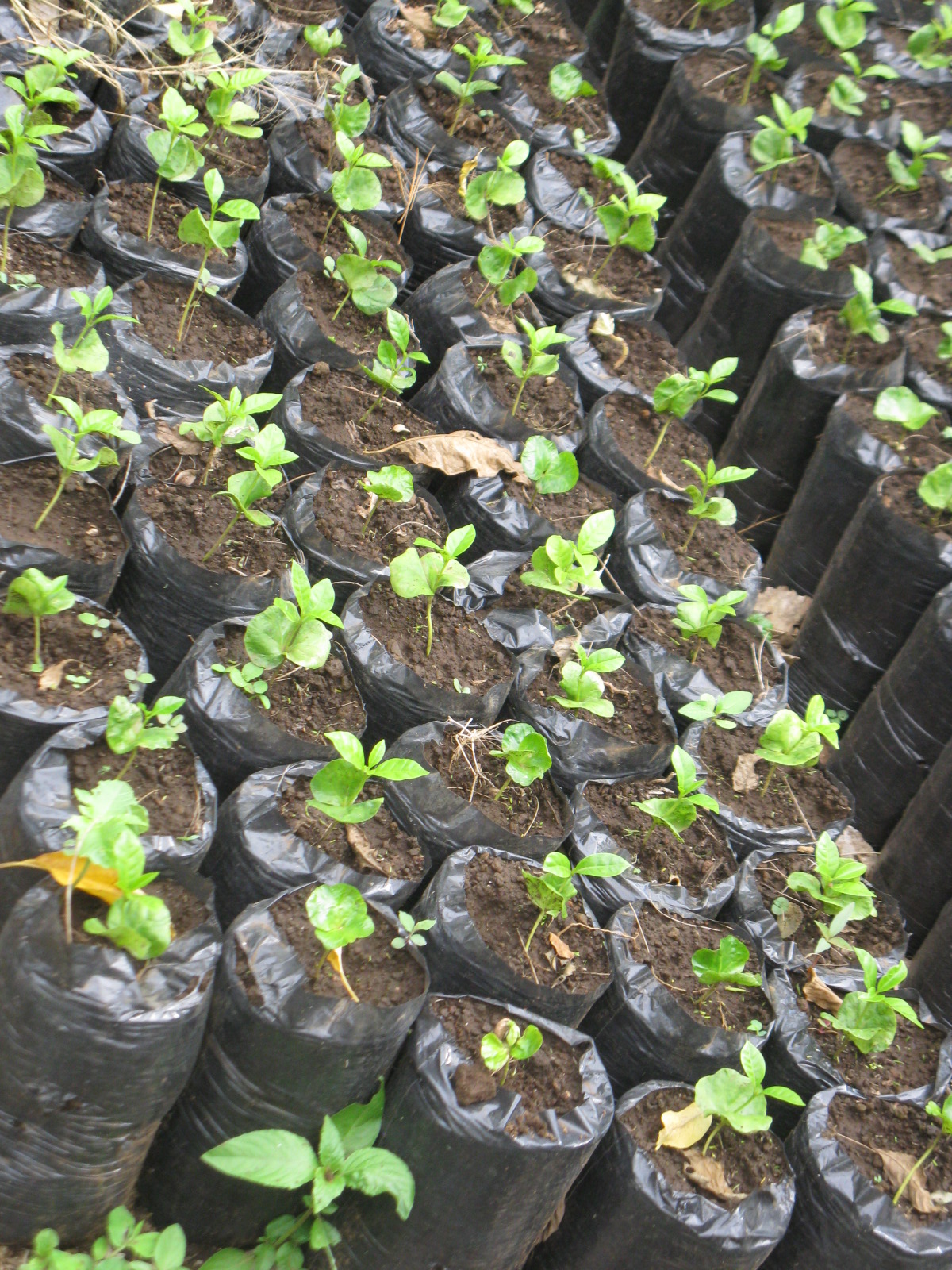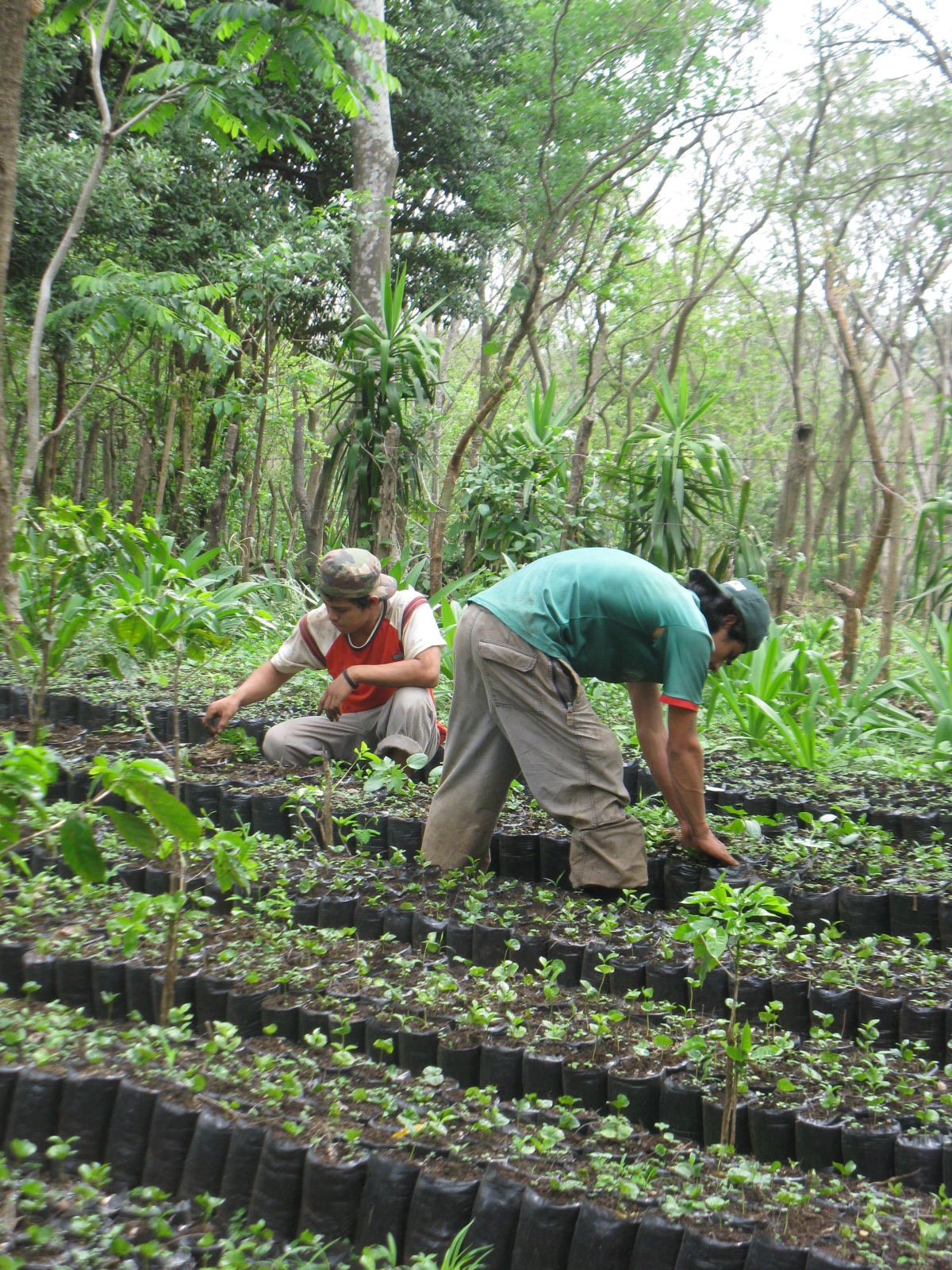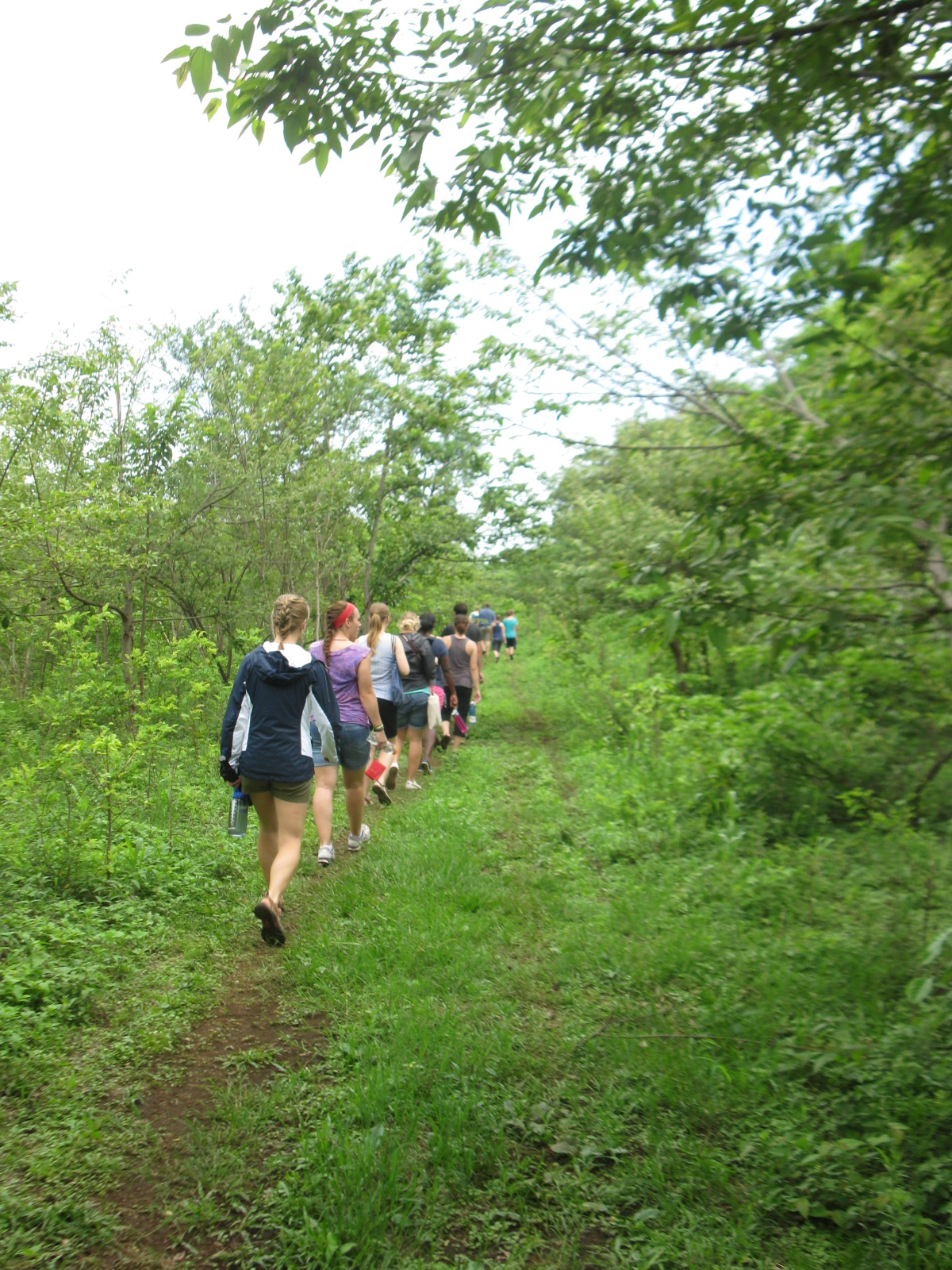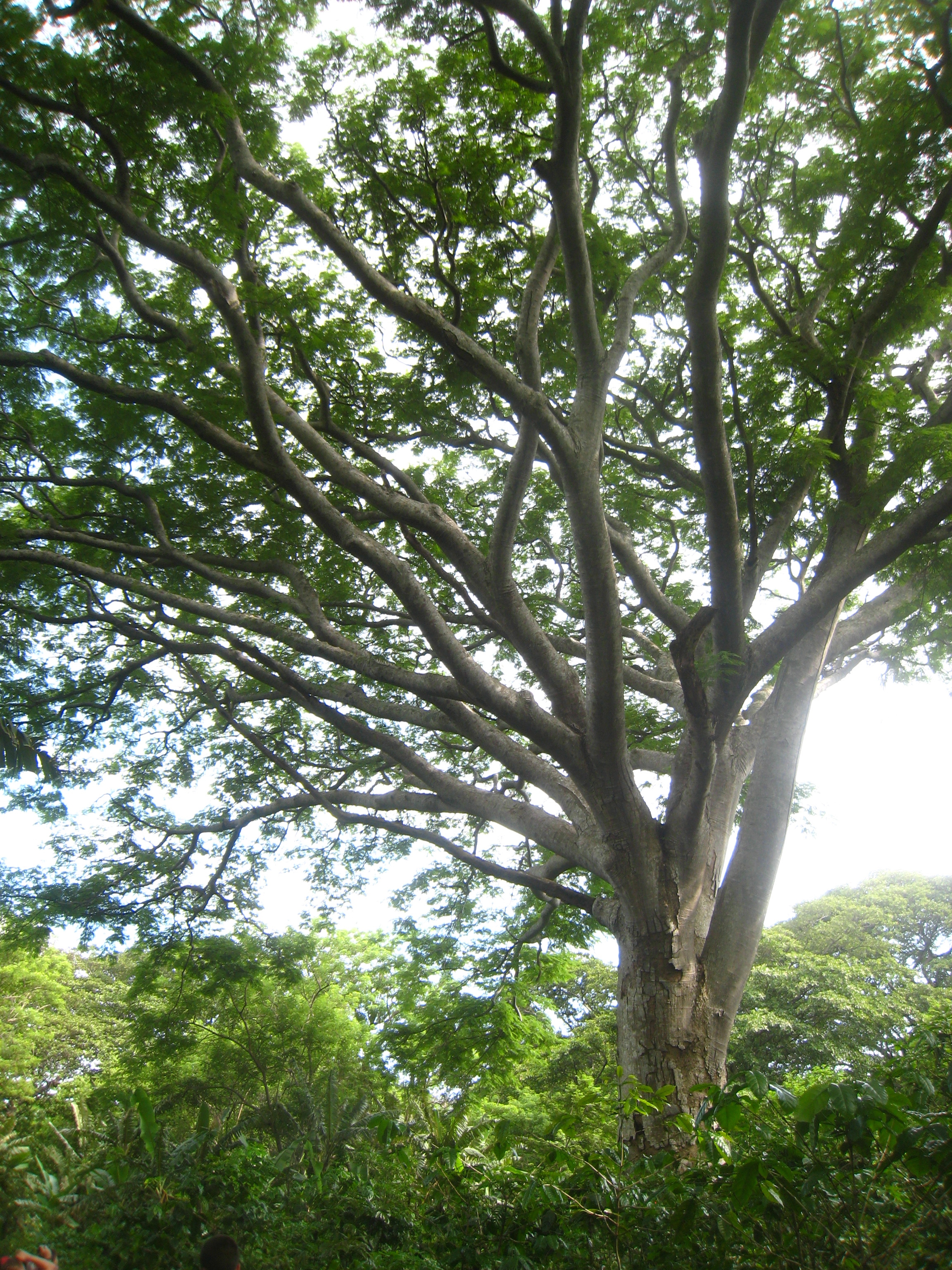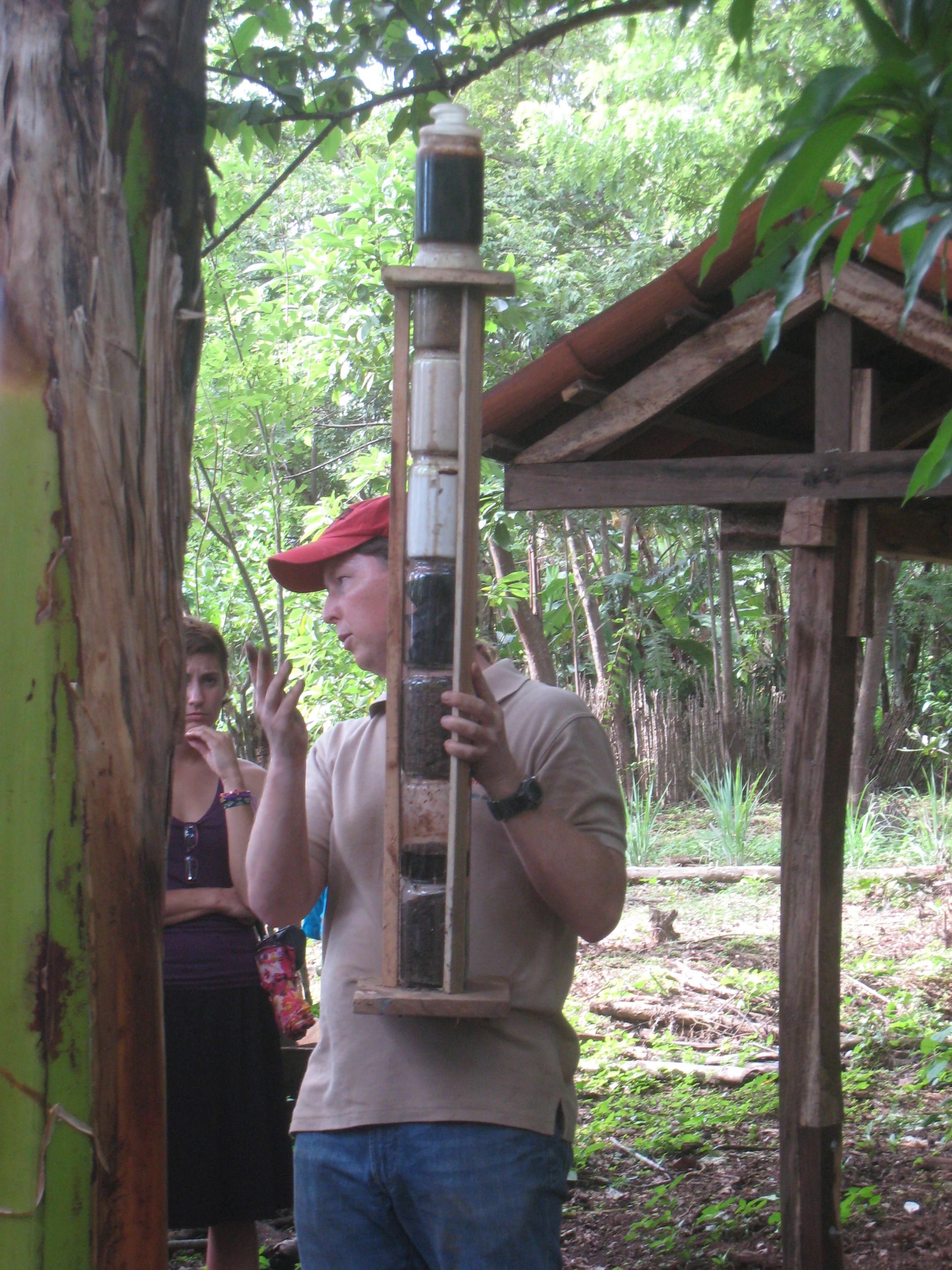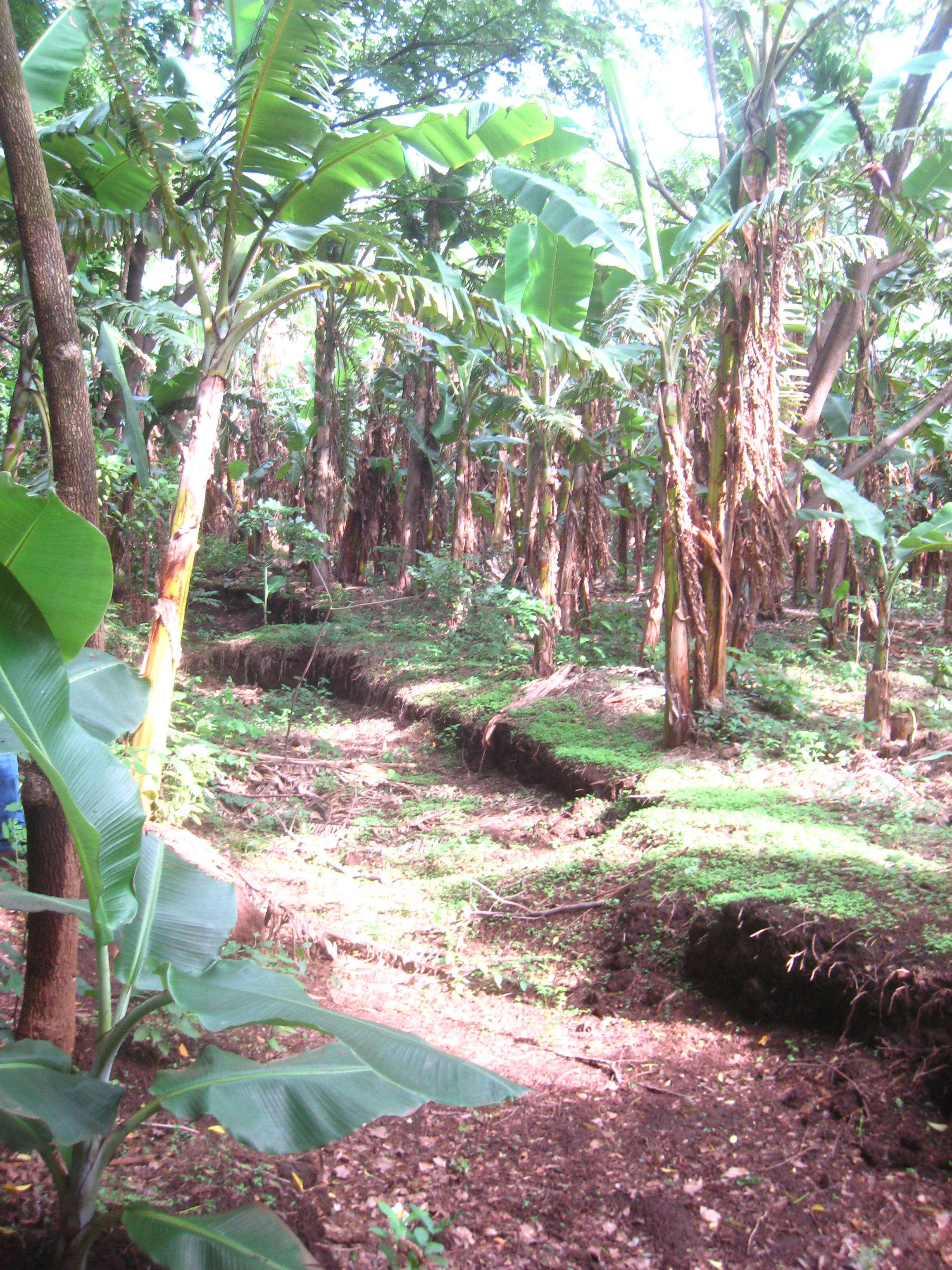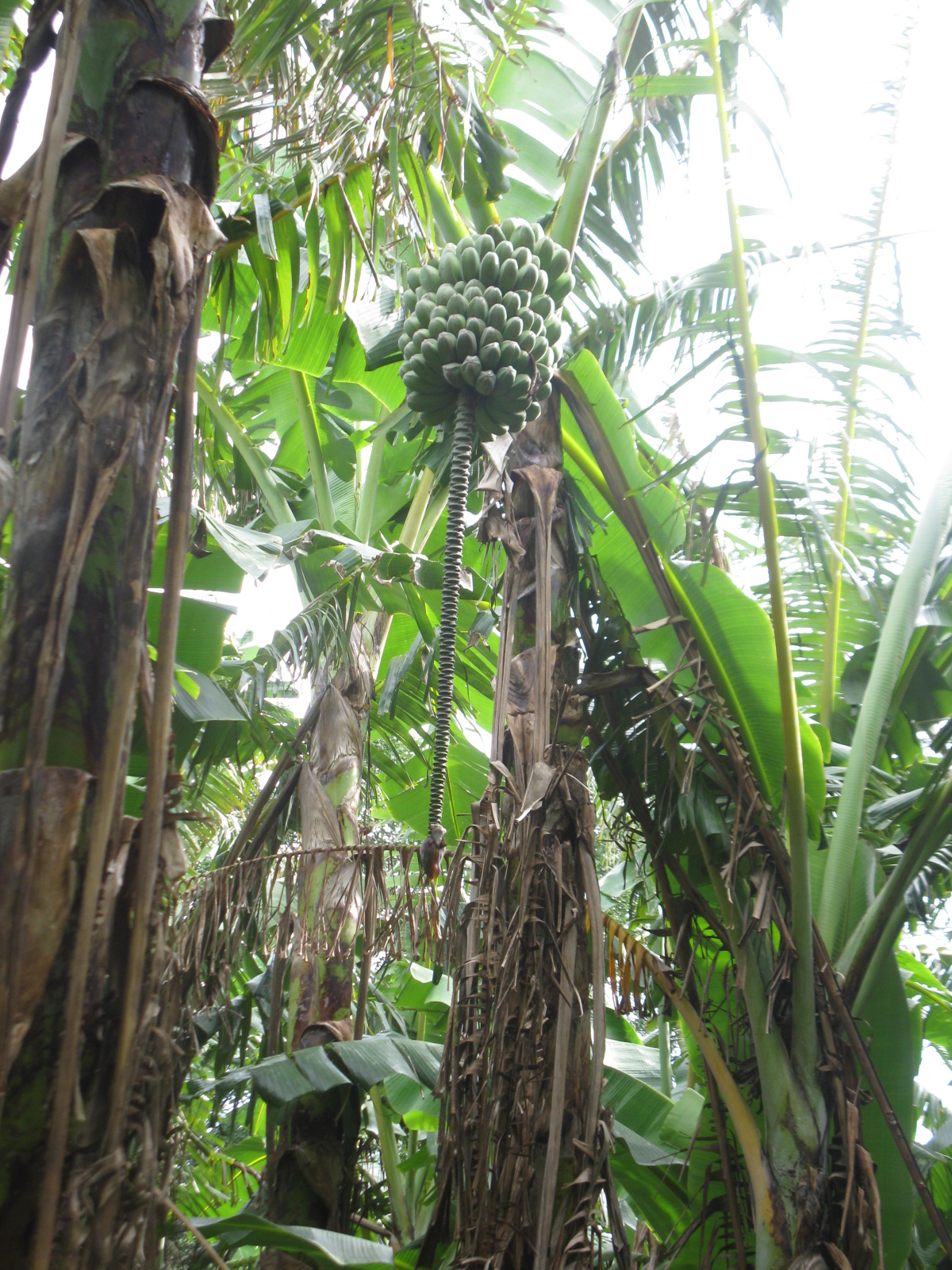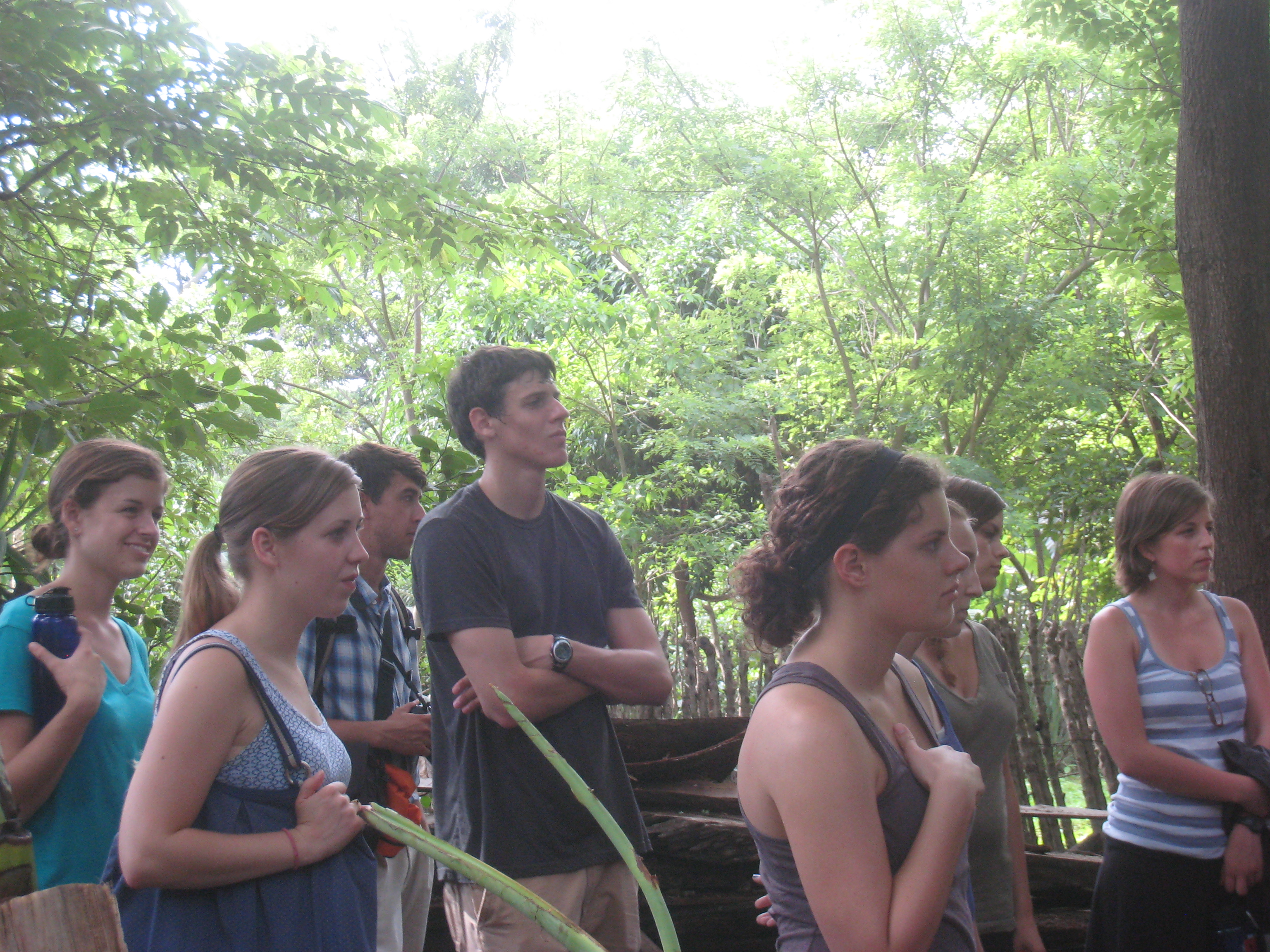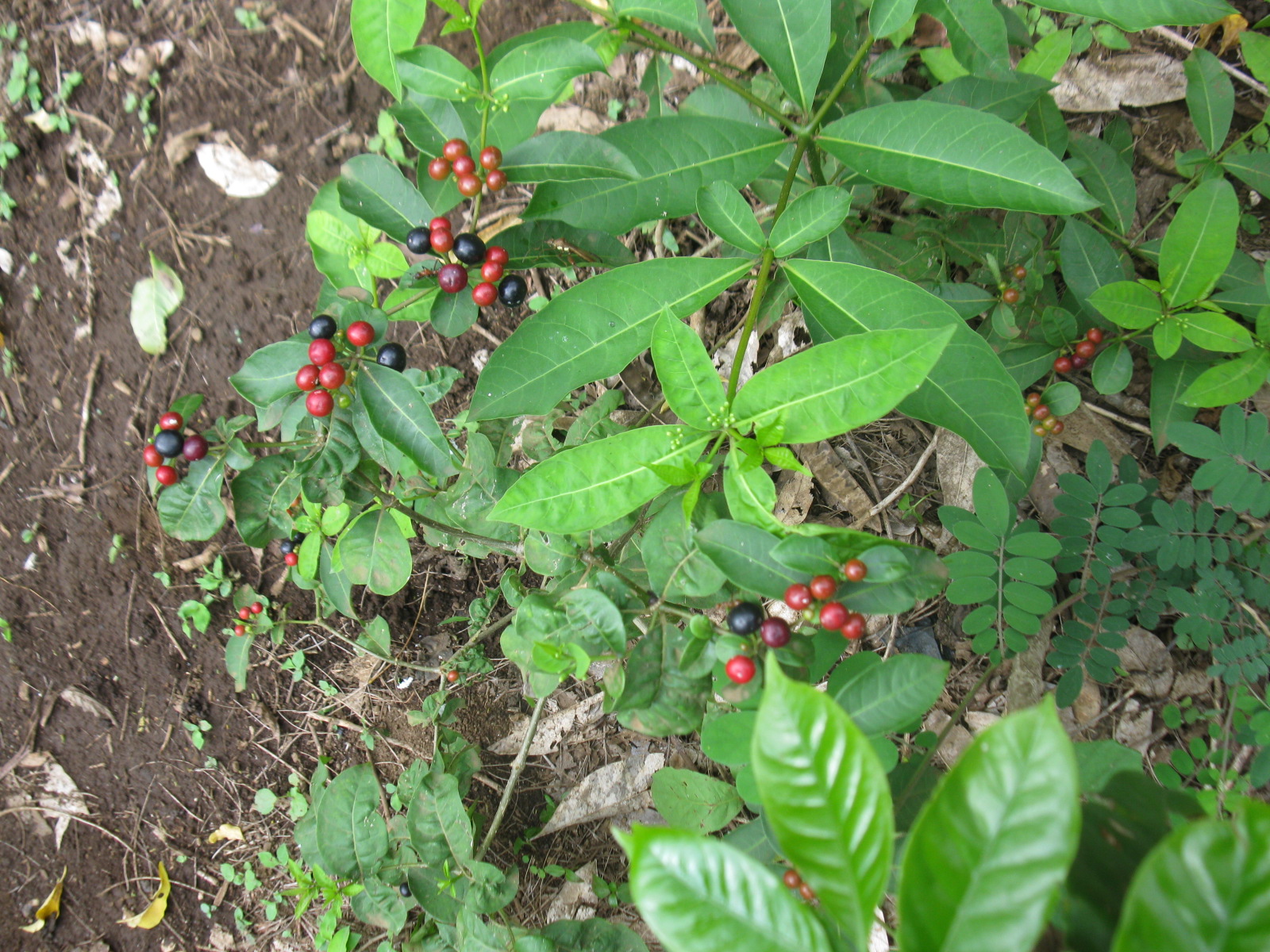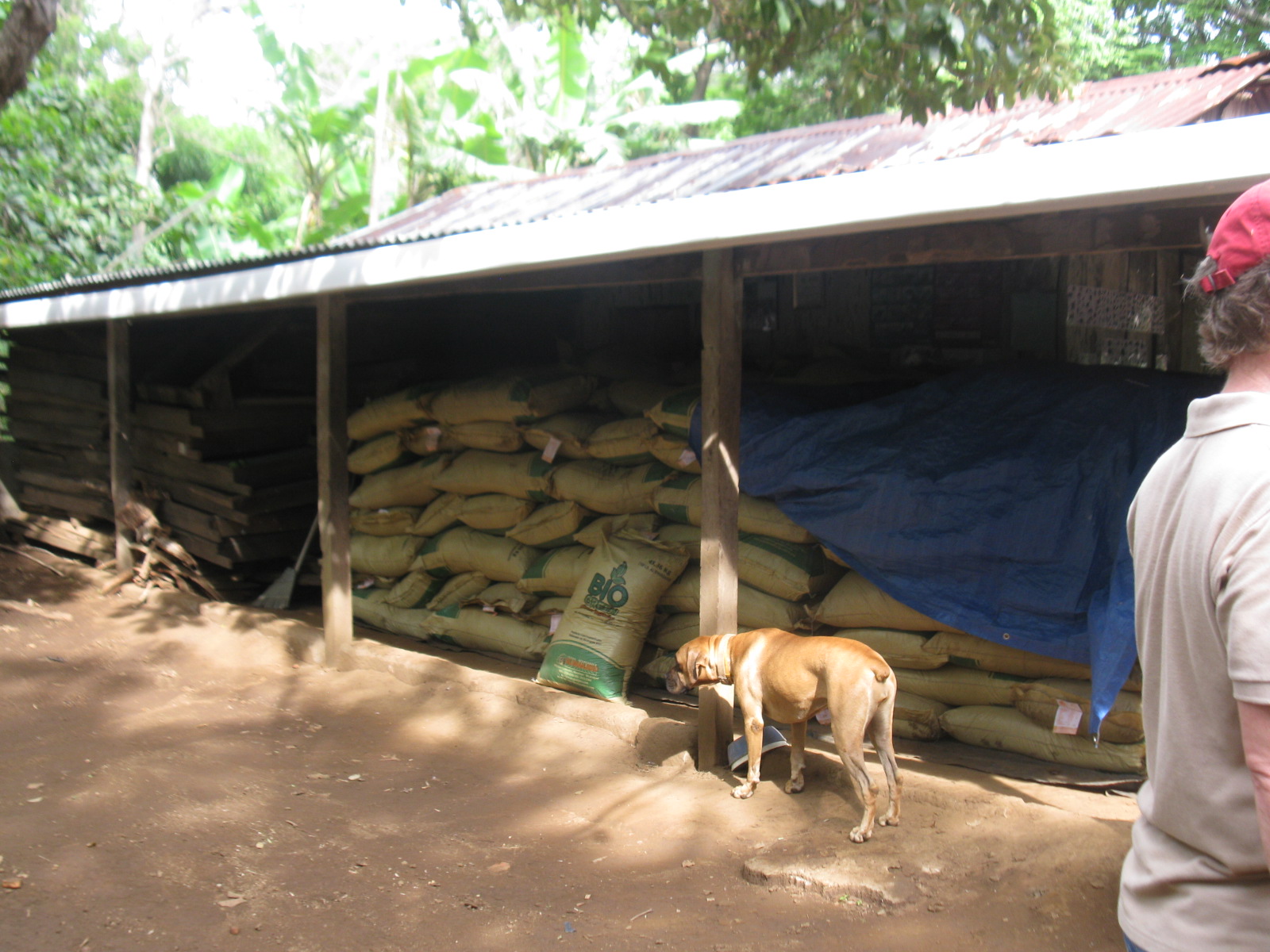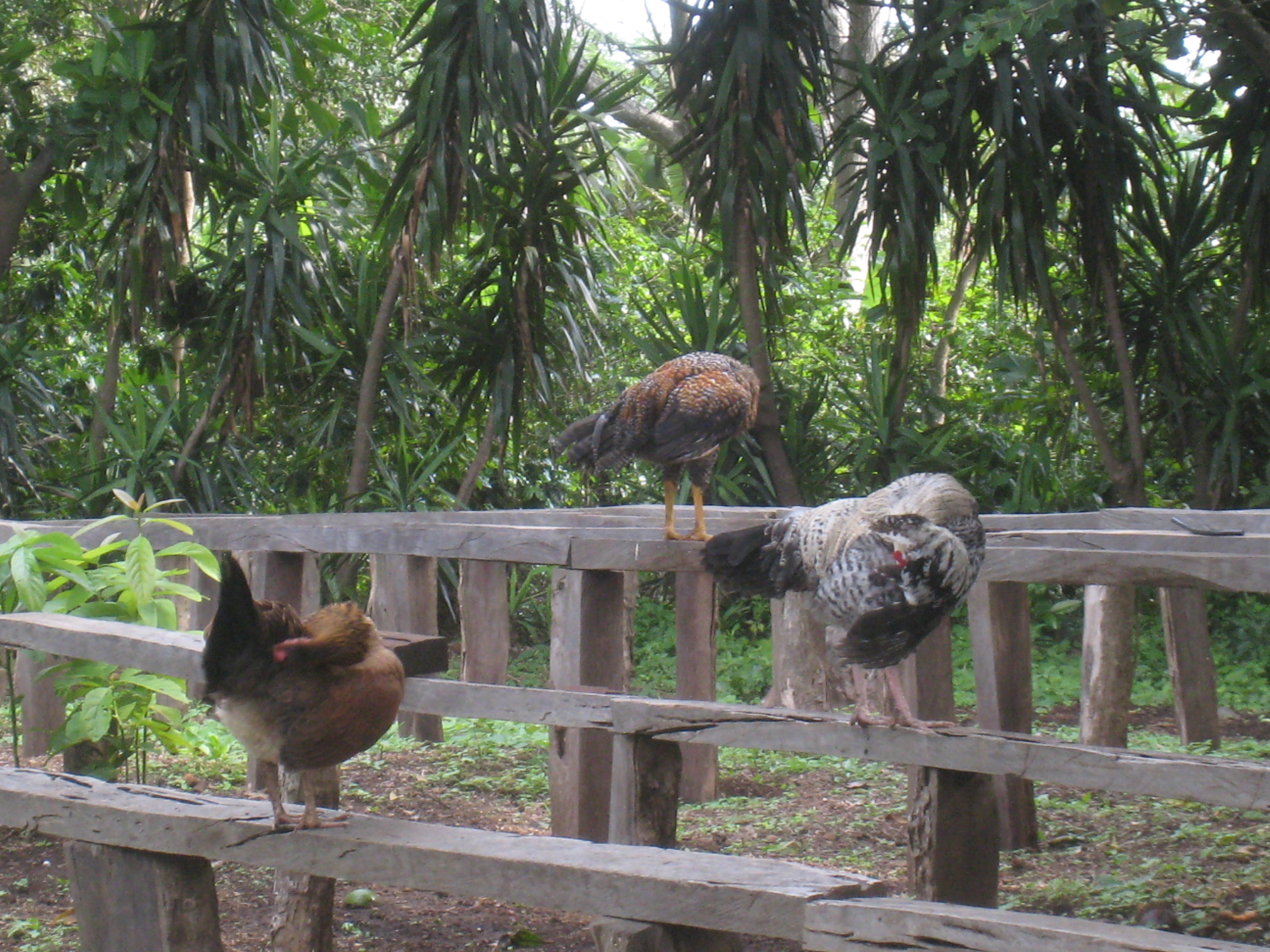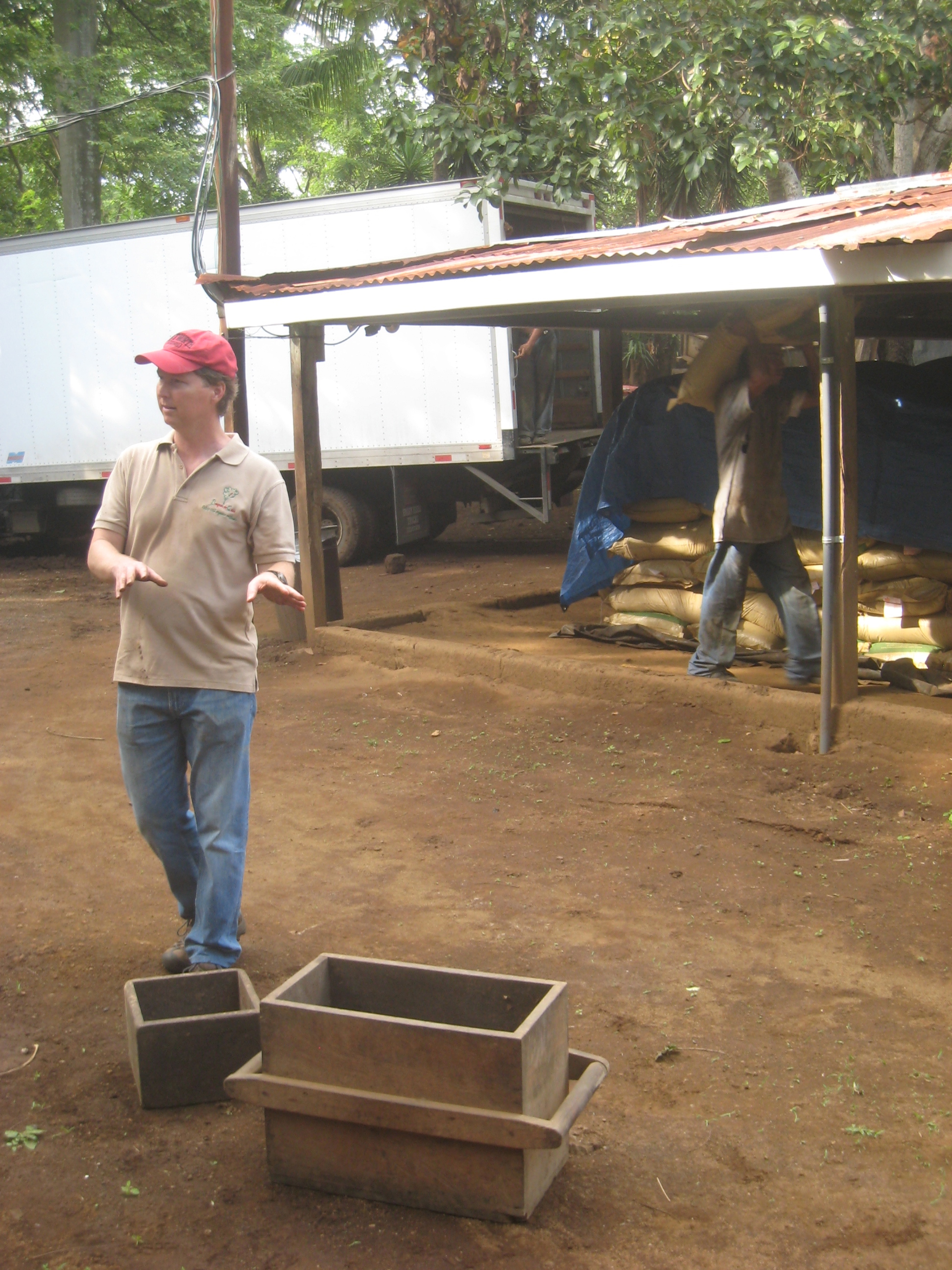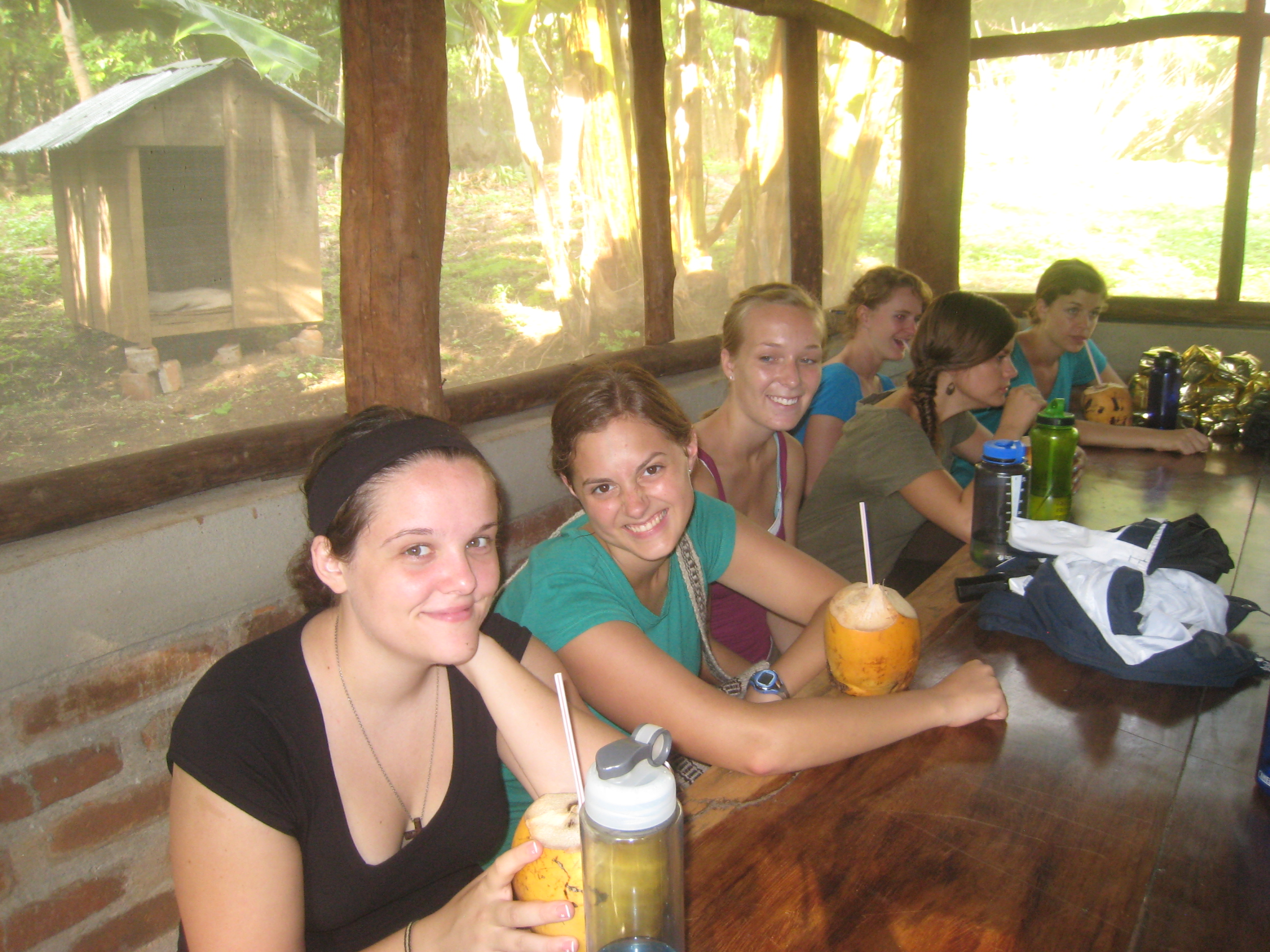How earth friendly is your cup of coffee?
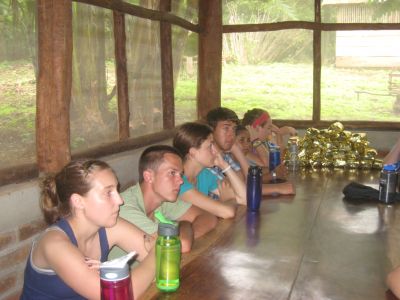
Our last field trip was only about 30 minutes away from Jinotepe, but in an area that felt a lot farther away. We drove through the town of Diriamba, where 7 students live, and continued past the soccer stadium where the road eventually turned to dirt. We bumped along the road into a rural part of the area we weren’t familiar with. We finally arrived at Gaia Estates, an organic, bird-friendly coffee farm. Jefferson Shriver was there to meet us and give us an overview of the farm, a nice hike through the farm, description of how coffee is grown and harvested, and finished off with some coconut water. Diriamba is where Nicaraguan coffee was first grown, beginning in the 1800s.
Jefferson’s farm is 52 acres and is certified organic and bird-friendly. He has fair trade practices but because of the size of his farm, currently he isn’t able to be fair trade certified, but the rules are slowly changing and he hopes to become fair trade certified soon. The farm produced 6,000lbs of coffee last year (enough to break even on the budget) but should be producing 20,000lbs (which will make a profit). With the coffee trees they also grow bananas, plantains, avocados, and lots more. Jefferson explained the importance of shade grown coffee as well as bird-friendly coffee. Shade trees provide homes for birds and other animals as well as protect the tropical soils from erosion, provide nutrients, and suppress weeds, thus reducing or eliminating the need for chemical herbicides and fertilizers.
During coffee harvest season, Jefferson employs over 30 people to help pick the reddest berries. Jefferson pays the pickers 20 córdobas per box where other farmers pay around 14 córdobas. Most pickers can pick around 8 boxes a day. We were shocked about those prices but it averages out to US$165/month, which is almost double minimum wage.
Students enjoyed the hike through the farm, listening to the cicadas, avoiding the ants, and the smell that reminded them of summer evenings back home.
